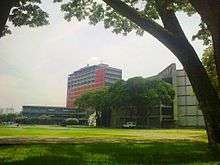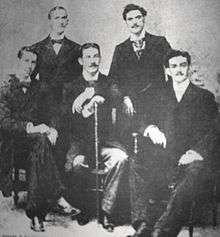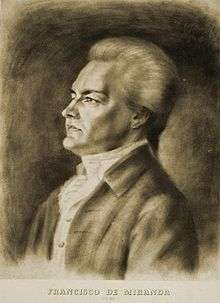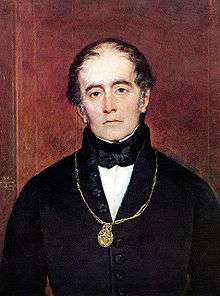Central University of Venezuela
| Universidad Central de Venezuela | |
 | |
| Motto |
La Casa que Vence la Sombra (Spanish, "The f,c ,sd.c .,........,,,,,,,,,,,,,,,,,,,,,,,,,,,,,,,,,,,,,,,,,,,,,,,,,,,,,, house that defeats the shadow") |
|---|---|
| Type | Public |
| Established | 1721 (Universidad Real y Pontificia de Caracas) |
| Rector | Cecilia García Arocha |
Academic staff | 5,176[1] |
Administrative staff | 9,778[1] |
| Students | 57,569[2] |
| Location | Caracas and Maracay, Venezuela |
| Campus | World Heritage Site, Urban, 1.642 km² |
| Website | ucv.ve |
The Central University of Venezuela (or Universidad Central de Venezuela, UCV, in Spanish) is a premier public university of Venezuela located in Caracas. It is widely held to be the highest ranking institution in the country, and it also ranks 18th in Latin America.[3] Founded in 1721, it is the oldest university in Venezuela and one of the oldest in the Western Hemisphere .
The main university campus, Ciudad Universitaria de Caracas, was designed by architect Carlos Raúl Villanueva and it is considered a masterpiece of urban planning and was declared a World Heritage Site by UNESCO in 2000.
History
Origins
The origin of the university goes back to Friar Antonio González de Acuña (1620–1682), a Peruvian Bishop who studied theology at the Universidad de San Marcos and founded in 1673 the Seminary Saint Rose of Lima in Caracas named after the first Catholic Saint born in the Americas. In the following years, Friar Diego de Baños y Sotomayor broadened the scope of the seminary by creating the School and Seminary of Saint Rose of Lima in 1696. Yet, in spite of the creation of the seminar, students who wished to obtain a university degree had to travel great distances to attend universities located in Santo Domingo, Bogotá or Mexico City. Given such harsh circumstances, the Rector of the Seminary, Francisco Martínez de Porras and the people of Caracas requested the royal court in Madrid the creation of a university in Venezuela (then part of the Viceroyalty of New Granada). As a result, on 22 December 1721 Philip V of Spain signed in Lerma a Royal Decree that transformed the School-Seminary into the Universidad Real y Pontificia de Caracas. The Royal Decree was concurred by Pope Innocent XIII with a Papal bull in 1722. The university offered degrees in Philosophy, Theology, Canon law and Medicine. Until 1810, when the Seminary of Saint Bonaventura located in Mérida became the Universidad de Los Andes, the Universidad Real y Pontificia de Caracas was the only university existing in the country.

Republican years
Until the end of the 18th century, the official papal and royal censorship on books was largely ignored in Venezuela, a situation which allowed the smuggling of the works by Rousseau, Voltaire, Diderot, Montesquieu, Locke, Helvetius, Grotius in the ships belonging to the Guipuzcoana Company.
The Royal constitution was displaced by the Republican Statutes proclaimed by Simón Bolívar on 24 June 1827. The new statutes gave the institution a secular character and transferred the main authority to the Rector.
20th century

On December 1908, Juan Vicente Gómez came into power with a coup d'état against the government of Cipriano Castro. Gómez stayed in power until his death in 1935, and during this time the Dictator, having ambivalent feelings about the purpose of educating free minds when he could hire foreigners to exercise any technical requirements for the nation, decided to close the university from 1912 to 1922. When it reopened, the Rector Felipe Guevara Rojas had reorganized the traditional division of only a few schools and separated them into departments.
1928 became a very important year for the university when a group of students, known as the Generation of 1928, organized events during the "Students Week" protesting the dictatorship which culminated in an attempt to overthrow Gómez on 7 April of that year. This group, which shared a common front against Gómez, was conformed by people like Rómulo Betancourt, Miguel Otero Silva, Juan Oropeza, Isaac Pardo and Rodolfo Quintero. Most of them were jailed after the events or went into exile without being able to finish their studies.
The university continued to be at the forefront of the democratization of the country when in 1936, then President Eleazar López Contreras, ordered a decree suspending the Constitutional rights and declaring a general censorship of the press because the oil workers decided to start a strike (an unprecedented deed at the time). The Rector of the University, Francisco Antonio Rísquez, led the protest that followed through the streets of Caracas against the policies of López Contreras.
By 1942, the student population had been growing steadily for decades without any significant expansion of the University. Instead several schools, like Medicine, were moved to other buildings around the city. The administration of President Isaías Medina Angarita felt the need to move the university to a larger and more modern location where it could function as coherent whole. The government bought the Hacienda Ibarra and the responsibility of the main design was given to the architect Carlos Raúl Villanueva after a visit to the University City of Bogotá convinced the authorities of the Ministry of Public Works that, in order to avoid constructing a group of heterogeneous buildings, the design should be under one architect.
The new campus was going to become a vast urban complex of about 200 hectares and included 40 buildings. Villanueva worked with 28 avant-garde artists of the time, from Venezuela and the rest of the world, to build what continues to be one of the most successful applications of Modern Architecture in Latin America. Villanueva's guiding principle was the creation of a space where art and architecture cohabited in harmony in a "Synthesis of Arts". Among some of the most important pieces present in the university are the "Floating Clouds" by Alexander Calder, murals by Victor Vasarely, Wifredo Lam, Fernand Léger and sculptures by Jean Arp and Henri Laurens. The Ciudad Universitaria de Caracas was declared World Heritage by UNESCO, and it is the only modern university campus designed by a single architect to receive such high honor.
In 1958, after the fall of dictator Marcos Pérez Jiménez, a government commission established a new law for the universities. The new law came into place on 5 December, guaranteeing that faculty and students could work in an environment of freedom and tolerance. This very important legal foundation was however abused during the 1960s when guerrilla rebels, supported by Fidel Castro took refuge inside the university campus to escape prosecution from the government. This tense situation came to a stalemate in 1969 when students asking for a reform took over the university. On 3 October 1970, the administration of President Rafael Caldera ordered the university to be raided by the military and Rector Jesús María Bianco was forced to resign. The university reopened in 1971 with a new Rector and a new plan for renovation.
In terms of the academic development of the modern university, the second half of the 20th century was a time when the Central University's faculty body benefited greatly from the influx of European immigrants. Many intellectuals settled in Venezuela after the end of the Spanish Civil War and World War II and found jobs at the university. Those scientists and humanists helped develop lines of research and teaching at the university and educated many of the present generation of faculty members.
Organization and degrees
The university is organized into 11 schools (Facultades) which are subdivided into 40 departments (Escuelas).
All schools offer undergraduate degrees at the level of Licenciatura (5 years) and graduate degrees at the level of master's degree (2 years) and PhD (3–4 years) from the Graduate School.[4] The Graduate School, founded in 1941, offers 222 different specializations, 109 Master's degrees and 40 PhDs.[5]

- Humanities and Education[10]
- Law and Government[11]
- Medicine[12]
- Social Sciences and Economy[13]
- Veterinary[16]
Research ranking
The Ranking Iberoamericano de Instituciones de Investigacion based on the Institute for Scientific Information ranked the Central University of Venezuela as the most productive research institution in the country and as the 20th most productive in Latin America.[17] Other top 25 positions were reached in the following areas:
- 8th in Law[18]
- 10th in Social Sciences[19]
- 12th in Psychology and Education [20]
- 15th in Physiology and Pharmacology [21]
- 16th in Philology and Philosophy [22]
- 16th in Food technology [23]
- 18th in Mathematics[24]
- 18th in Medicine[25]
- 21st in Plant and Animal Biology[26]
- 21st in History and Art [27]
- 22nd in Architecture and Civil Engineering[28]
- 22nd Molecular Biology[29]
In 2010, according to University Ranking by Academic Performance (URAP),[30] it is the best university in Venezuela and 805th university in the world.
The 2016 QS World University Rankings, placed the UCV as 18th overall in their Latin American Universities Ranking.[31]
Notable alumni
See also UCV alumni
Humanists
- Francisco de Miranda (1750–1816) General, political thinker; fought in the main three revolutionary wars of the 18th century, American, French and South American.
- Andrés Bello (1781–1865) Poet, lawmaker, philosopher, educator and philologist.
- Juan Germán Roscio (1763–1821) Lawyer, main redactor of the Venezuelan Declaration of Independence.
- Andrés Eloy Blanco (1896–1955) Poet.
- Miguel Otero Silva (1908–1985) Writer, journalist and co-founder of the newspaper El Nacional.
- María Teresa Castillo (1908–2012) Journalist, activist, politician and founder of Caracas Athenaeum.
- Alberto Barrera Tyszka (1960) Writer.
Scientists
- José Gregorio Hernández (1864–1919) physician.
- José González-Lander (1933–2000) engineer, chief designer of the Caracas Metro.
- Alfredo Jahn (1867–1940) engineer, anthropologist.
- Manuel Núñez Tovar (1878-1925) naturalist, researcher, parasitologist and entomologist.
- Luis Razetti (1862-1932) physician.
- Rafael Villavicencio (1832-1920) physician.
Politicians
- Carlos Benito Figueredo (1857-1935) journalist, politician and diplomat.
- Alexis Navarro (1946–2016), former Governor of Nueva Esparta (2000–2004)[32]
- Alfredo Peña (b. 1944) journalist, member of the constitutional assembly which drafted the 1999 Venezuelan Constitution, mayor of Caracas (2000).
- Teodoro Petkoff (b. 1932) congressman, co-founder of the political party MAS and current chief editor of the newspaper "Tal Cual".
- Ali Rodriguez (b. 1937) secretary-general of OPEC (2000) and chairman of Petroleos de Venezuela PDVSA.
- Irene Sáez (b. 1961) mayor of Chacao, Governor of Nueva Esparta, Miss Universe 1981.
Businessmen
- Lorenzo Mendoza Fleury (1897–1969) founder of Empresas Polar, a prize in his name honors scientific research.
- Eladio Lárez (b. 1941) ex-president of Radio Caracas Television.
- Miguel Enrique Otero (b. 1950) mathematician, (also faculty for five years) chairman and owner of the newspaper El Nacional.
Presidents of Venezuela
- José María Vargas, (also Rector, faculty and alumnus) scientist (1835–36).
- Andrés Narvarte, lawyer (1836–37).
- Pedro Gual Escandon, lawyer (1859, 1861).
- Guillermo Tell Villegas, lawyer (1868–69, 1870, 1892).
- Guillermo Tell Villegas Pulido, lawyer (1892).
- Antonio Guzmán Blanco, lawyer (1879–1884).
- Raimundo Andueza Palacio, lawyer (1890–1892).
- José Gil Fortoul, political scientist (1913–1914).
- Juan Bautista Pérez, lawyer (1929–1931).
- Rómulo Betancourt, (did not finished) (1945–1948).
- Rómulo Gallegos, (did not finished) writer (1948).
- Germán Suárez Flamerich, (also Faculty) lawyer (1950–52).
- Edgar Sanabria, (also Faculty) lawyer (1959).
- Raúl Leoni, (did not finished) (1964–1969).
- Rafael Caldera, (also Faculty) political scientist (1969–1974), (1994–1999).
- Carlos Andrés Pérez, (did not finished) (1974–1979), (1989–1993).
- Luis Herrera Campins, (not finished) (1979–1984).
- Jaime Lusinchi, physician (1984–1989).
- Ramón José Velásquez,(also Faculty) historian (1993–94).
Notable faculty
See also UCV faculty

18th Century
- Lorenzo Campins y Ballester (1726–1785) Spanish born scientist, founder of the studies of medicine.
- Fr. Baltasar de los Reyes Marrero (1752–1809) (also alumnus) began the teaching of modern science and philosophy based on the theories of Newton, Kepler, Copernicus, Stahl, Lavoisier, Locke, Condillac, Leibniz and Wolff. In 1789 he was convicted by the Crown as an infidel for teaching doctrines forbidden by the King.
19th Century
- Juan Manuel Cagigal (1803–1856) mathematician.
- Alejandro Chataing (1873–1928) (also alumnus) mathematician, architect.
- Agustin Codazzi (1793 - 1859) Italian military, scientist and geographer
- Fermín Toro (1806–1865) politician and linguist.
- Alejandro Ibarra (1813–1880) scientist.
- José Gregorio Hernández (1864–1919) (also alumnus) physician, began the teaching of Microbiology in Venezuela.
- Adolf Ernst (1832–1899) Prussian born scientist, started the teaching of natural history based on Charles Darwin and Lamarck.
- Luis Razetti (1862–1932) (also alumnus) physician, began the teaching of modern surgery in Venezuela and wrote an influential code of ethics for the practice of medicine.
20th Century
Humanities
- Abraham Abreu (b. 1939), pianist and harpsichordist.
- Mario Briceño Iragorry (1897–1958) writer.
- José Balza (b. 1939) novelist, critic.
- Rafael Cadenas (b. 1930) poet.
- Manuel Caballero (1931–2010) (also alumnus) historian, journalist.
- Alejo Carpentier (1904–1980) writer, musicologist, journalist.
- Isaac Chocrón (1930-2011) economist and theater writer. Director of the School of Arts.
- Nicolas Curiel (b.1931) writer and director of theater.
- Gustavo Herrera (1890–1953) lawyer and diplomat.
- Gaston Diehl (1912–1999) French art historian, recipient of the Academy Award for Live Action Short Film in 1950.
- Juan David García Bacca (1901–1992) Spanish born philosopher; translator of the complete works of Plato.
- Gertrude Goldschmidt (1912–1994) German born artist.
- Joaquín Gabaldón Márquez (1906–1984) lawyer and diplomat.
- Ezra Heymann (b.1928) Rumanian born philosopher.
- Eugenio Imaz (1900–1951) Spanish born philosopher.
- Pedro Itriago Chacín (1875-1936), lawyer, historian.
- Margarita López Maya, historian, humanist.
- Ernesto Mayz Vallenilla (1925-2015) (also alumnus) philosopher, rector of the Universidad Simón Bolívar.
- Juan Nuño (1927–1995) (also alumnus) Spanish born philosopher.
- Manuel García Pelayo (1909–1991) Spanish born political Scientist, elected president of the Constitutional Tribunal of Spain in 1980.
- Manuel Pérez Vila (1922–1991) Spanish born historian.
- Pedro Antonio Ríos Reyna (1905–1971) classical musician.
- Federico Riu (1925–1985) (also alumnus) Spanish born philosopher.
- Angel Rosenblat (1902–1984) Polish born philologist.
- Levy Rossell (b.1945) writer and director of theater.
- Mariano Picón Salas (1901–1965) writer, cultural critic.
- José Antonio Ramos Sucre (1890–1930) (also alumnus) poet, writer.
- Oscar Sambrano Urdaneta (1929–2011) writer, essayist and literary critic.
- Guillermo Sucre (b. 1933) (also alumnus) literary critic.
- Arturo Uslar Pietri (1906–2001) (also alumnus) writer and historian, winner of the Prince of Asturias Award (1990) and Rómulo Gallegos Prize for Best Novel (1991).
- Carlos Raúl Villanueva (1900–1975) architect, one of the great Modernists.
- Guillermo Tell Villegas Pulido (also alumnus), politician, writer and historian.
- Pedro León Zapata (1929–2015) artist and humorist.
Sciences
- Arístides Bastidas (1924–1992) journalist and scientist winner of the Kalinga Prize, was one of the pioneers of what is termed as "science journalism" in Venezuela.
- German Carnevali Fernandez-Concha (b. 1955) botanist.
- Luis Eduardo Chataing (1906–1971) (also alumnus) mathematician.
- Paul Dedecker (1927–2007) Belgian mathematician.
- Jacinto Convit (1913–2014) (also alumnus) nominated for the Nobel Prize in Medicine in 1988 for his research on the cure of Leprosy.
- Francisco José Duarte (1883–1972) mathematician.
- Humberto Fernández Morán (1924–1999) contributed to the development of the electron microscope and was the first researcher to introduce the concept of cryoultramicrotomy.
- Celso Fortoul Padrón(also alumnus)civil engineer and calculist of pre-tensate infraestructures.
- Arnoldo Gabaldon (1909-1990) physician, started the fight over tropical diseases as Malaria.
- Luis Alfredo Herrera Cometta, relativistic physicist. Professor Emeritus.
- Werner Jaffé (1914–2009) founder of the National Institute of Nutrition. Studied under Nobel prize winner Paul Karrer.
- Tobías Lasser (1911–2006) (also alumnus) botanist, founder of the Botanical Garden of Caracas, the modern School of Sciences and the Department of Biology.
- Fuad Lechín (b. 1928) physician, nominated for the Nobel Prize in Medicine in 2001 for the development of new treatments of bronchial asthma and myasthenia.
- Antonio Machado - Allison (b. 1945) ictiologist.
- Francisco Mago Leccia (1931–2004) ictiologist.
- Rafael Martínez Escarbassiere (b. 1929) biologist
- Ettore Mazzarri (1919–2009) chemist specialist of Maracay Agronomy faculty
- August Pi i Sunyer (1879–1961) Physiologist Spanish born. Winner of the Kalinga Prize 1956.
- Carles Pi i Sunyer (1888–1971) Spanish born industrial engineer and literate
- Janis Rácenis (1915–1980) Latvia born enthomologist.
- Ivón Mercedes Ramírez Morillo (b. 1965) botanist.
- Gustavo Adolfo Romero-Gonzales (b. 1955) botanist.
- Marcel Roche (1920–2003) physician, winner of the Kalinga Prize, governor of the International Atomic Energy Agency (1958–1960) and founding member Third World Academy of Sciences.
- Carlos Toro Manrique (1868–1937) (also alumnus) engineer, mathematician.
- Elías Toro (1871-1918) physician, anthropologist.
Rectors
18th Century
19th Century
|
|
20th Century
|
21st Century
|
See also
- Education in Venezuela
- List of universities in Venezuela
- List of colonial universities in Latin America
References
- 1 2 http://www.iesalc.unesco.org.ve/acreditacion/venezuela/Informe%20Acreditación-Anexo2-III-Vzla.pdf
- ↑ Martinez, Eugenio (1 October 2007). "UNIVERSIDADES COMENZARÁN CLASES DE FORMA ESCALONADA". El Universal. Retrieved 23 December 2007.
- ↑ "Study in Venezuela". Top Universities. Retrieved 2016-02-09.
- ↑ Bienvenido al SIDEP Archived 1 October 2006 at the Wayback Machine.
- ↑ Bienvenido al SIDEP Archived 1 October 2006 at the Wayback Machine.
- ↑ FAU UCV - Facultad de Arquitectura y Urbanismo - Bienvenido
- ↑ Facultad de Agronomía de la Universidad Central de Venezuela ::: Inicio Archived 21 April 2006 at the Wayback Machine.
- ↑ Facultad de Odontología - Universidad Central de Venezuela Archived 24 April 2006 at the Wayback Machine.
- ↑ Facultad de Ingeniería-U.C.V
- ↑ Facultad de Humanidades Archived 15 April 2006 at the Wayback Machine.
- ↑ * * * * UCV - Facultad de Ciencias Jurídicas y Políticas - UCV * * * * Archived 21 April 2006 at the Wayback Machine.
- ↑ Universidad Central de Venezuela - Facultad de Medicina
- ↑ Facultad de Ciencias Económicas y Sociales Archived 12 May 2006 at the Wayback Machine.
- ↑ Facultad de Farmacia Archived 23 May 2006 at the Wayback Machine.
- ↑ http://www.ciens.ucv.ve
- ↑ "Archived copy". Archived from the original on 23 April 2006. Retrieved 2006-04-19.
- ↑ Ranking-Instituciones-Investigacion-Latinoamerica Archived 14 January 2009 at the Wayback Machine.
- ↑ Ranking-Instituciones-Investigacion-Latinoamerica-Derecho Archived 14 January 2009 at the Wayback Machine.
- ↑ Ranking-Instituciones-Investigacion-Latinoamerica-Ciencias-Sociales Archived 14 January 2009 at the Wayback Machine.
- ↑ Ranking-Instituciones-Investigacion-Latinoamerica-Psicologia-Ciencias-Educacion Archived 26 October 2008 at the Wayback Machine.
- ↑ Ranking-Instituciones-Investigacion-Latinoamerica-Fisiologia-Farmacologia Archived 14 January 2009 at the Wayback Machine.
- ↑ Ranking-Instituciones-Investigacion-Latinoamerica-Filologia-Filosofia Archived 14 January 2009 at the Wayback Machine.
- ↑ Ranking-Instituciones-Investigacion-Latinoamerica-Ciencia-Tecnologia-Alimentos Archived 14 January 2009 at the Wayback Machine.
- ↑ Ranking-Instituciones-Investigacion-Latinoamerica-Matematicas Archived 14 January 2009 at the Wayback Machine.
- ↑ Ranking-Instituciones-Investigacion-Latinoamerica-Medicina Archived 12 July 2007 at the Wayback Machine.
- ↑ Ranking-Instituciones-Investigacion-Latinoamerica-Biologia-Vegetal-Animal-Ecologia Archived 14 January 2009 at the Wayback Machine.
- ↑ Ranking-Instituciones-Investigacion-Latinoamerica-Historia-Arte Archived 14 January 2009 at the Wayback Machine.
- ↑ Ranking-Instituciones-Investigacion-Latinoamerica-Ingenieria-Civil-Arquitectura Archived 14 January 2009 at the Wayback Machine.
- ↑ Ranking-Instituciones-Investigacion-Latinoamerica-Biologia-Molecular-Celular-Genetica Archived 14 January 2009 at the Wayback Machine.
- ↑ "URAP – University Ranking by Academic Performance".
- ↑ http://www.topuniversities.com/university-rankings/latin-american-university-rankings/2012
- ↑ Guillén Montero, Mario (2014-05-23). "Rendirán honores al exgobernador Alexis Rafael Navarro Rojas". El Sol de Margarita. Retrieved 2016-06-21.
Printed References
- ÁVILA BELLO, JOSÉ. y CONVIT, JACINTO. 1992: “El Instituto de Biomedicina. Evolución reciente”. En: Ruiz Calderón, Humberto et. all. “La ciencia en Venezuela pasado, presente y futuro”. Cuadernos Lagoven. Lagoven, S.A. Caracas Venezuela pp:92-101.
- BARROETA LARA, JULIO. 1995: “"Nuestra y trascendente Universidad Central de Venezuela"”. Universidad Central de Venezuela, Dirección de Cultura. Caracas – Venezuela.
- CADENAS, JOSÉ MARÍA. 1994; “Relaciones universidad empresa: una aproximación a su situación en Venezuela”. EN: "Agenda Académica". Universidad Central de Venezuela. Caracas Venezuela.
- CUENCA, HUMBERTO. 1967: “"La universidad colonial"”. Universidad Central de Venezuela. Caracas – Venezuela.
- HENRIQUEZ UREÑA, PEDRO. 1955: “"Historia de la cultura en la América Hispánica"”. Colección Tierra Firme. Fondo de Cultura Económica. Ciudad de México – México. 243p.
- HERRERA Z, HENRY. y ORTA, SOLANGE. 1995: “"Universidad Central de Venezuela"”. En: "Diccionario multimedia de Historia de Venezuela. Fundación Polar. Caracas – Venezuela.
- LEAL, ILDEFONSO. 1963: “Historia de la Universidad de Caracas (1721–1827) ”. Universidad Central de Venezuela. Caracas – Venezuela.
- LEAL, ILDEFONSO. 1970: “El Claustro de la Universidad y sus Historia”. Tomo I (1756–1774) Estudio preliminar y compilación; Universidad Central de Venezuela. Caracas – Venezuela. 358p.
- LEAL, ILDEFONSO. 1971: “Universidad Central de Venezuela 1721–1971”. Ediciones del Rectorado de la Universidad Central de Venezuela. Caracas – Venezuela. 152p.
- LEAL, ILDEFONSO. 1979: “El Claustro de la Universidad y sus Historia II”. Tomo I (1721–1756) Estudio preliminar y compilación; Universidad Central de Venezuela. Caracas – Venezuela. 362p.
- LEAL, ILDEFONSO. 1981: “Historia de UCV”. Ediciones del Rectorado de la Universidad Central de Venezuela. Caracas – Venezuela. 544p.
- LEAL, ILDEFONSO. 1981: “Historia de la Universidad Central de Venezuela, 1721-1981”. Universidad Central de Venezuela. Caracas – Venezuela.
- LEAL, ILDEFONSO. 1983: “La Universidad de Caracas en los años de Bolívar 1783-1830”. Universidad Central de Venezuela. Caracas -Venezuela 2 volúmenes.
- MACHADO ALLISON, ANTONIO. 2005: “Memorias 40 años del Instituto de Zoologia Tropical”. Editorial Brima Color. Caracas – Venezuela. 155p.
- MÉNDEZ Y MENDOZA, JUAN DE DIOS. 1912: “Historia de la Universidad Central de Venezuela”. Tipografía Americana. Caracas. 2 volúmenes.
- PARRA LEÓN, CARACCIOLO. 1954: “"Filosofía universitaria venezolana 1782-1821"”. Editorial J. B. Madrid – España.
- TEXERA, YOLANDA. 1992: “La Facultad de Ciencias de la Universidad Central de Venezuela”. En: Ruiz Calderón, Humberto et. all. “La ciencia en Venezuela pasado, presente y futuro”. Cuadernos Lagoven. Lagoven, S.A. Caracas Venezuela pp:50-63.
- UNIVERSIDAD CENTRAL DE VENEZUELA. 1990: “Instituto de Zoología Tropical (IZT)”. Universidad Central de Venezuela. Caracas – Venezuela. 16p.
- UNIVERSIDAD CENTRAL DE VENEZUELA. 1978: “UCV prospecto de estudios Facultad de Ciencias. Universidad Central de Venezuela. Caracas – Venezuela. 123p.
- USLAR PIETRI, ARTURO. 1961: “"La universidad y el país"”. Imprenta Nacional. Caracas – Venezuela.
Cartographical References
- UNIVERSIDAD CENTRAL DE VENEZUELA. 1981: “"Plano de Ubicación de las obras de arte de la Ciudad Universitaria de Caracas"”. Universidad Central de Venezuela. Caracas – Venezuela.
External links
| Wikimedia Commons has media related to Central University of Venezuela. |
- Universidad Central de Venezuela-Official Site
- UCV Central Administration
- UCV Foundation
- Consejo Nacional de Universidades de Venezuela (Spanish)
Aerial Photos
- Aerial Photo from GoogleMaps
- The UCV is located at 10°29′18″N 66°53′27″W / 10.4884°N 66.8907°WCoordinates: 10°29′18″N 66°53′27″W / 10.4884°N 66.8907°W



